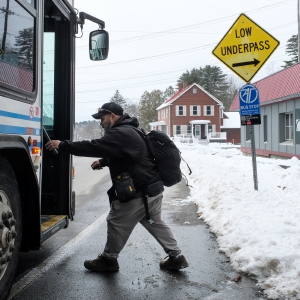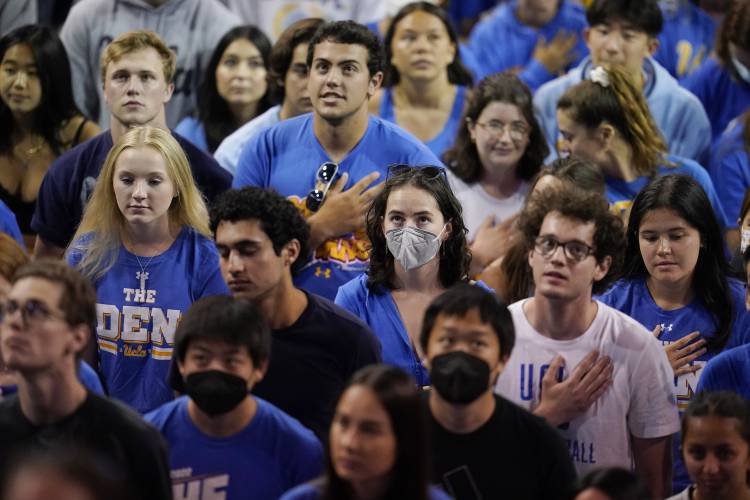Column: End of Affirmative Action — an opportunity to redefine merit
| Published: 06-06-2023 12:51 PM |
It is a foregone conclusion that the Supreme Court’s decision on the Harvard v. Lee case will effectively end affirmative action and the current use of “diversity” as a part of the admissions criteria. This pending decision has generated countless articles on the admission criteria to colleges, particularly the most competitive colleges. Some believe that admission criteria based on “diversity” deny entry to those who are more deserving based on objective criteria like SAT scores, GPAs, or class ranks. Others see such admission criteria as unfair to students whose schools are underfunded, to minority students who are the victims of systemic racism, or to students raised in poverty whose parents cannot afford tutorial services or personal computers that provide access to information and supplementary learning software.
The debate over college entry is heartfelt because many parents believe the entry criteria to competitive colleges are very consequential. They are correct, because for over 100 years the primary purpose of universal public education has been to identify those students who are most qualified to attend college. This sorting function, in turn, has dictated the lives children lead and defined their self-worth.
In the early 20th Century, before the widespread use of the SAT to screen applicants, entry to college was predominantly based on good grades in school and a student’s standing in comparison with others. Given the prevalent thinking on efficiency in that era, public schools divided students into age-based cohorts and measured them in these cohorts based on their ability to do well on objective tests. Until 1940, more than half of the students enrolled ended their schooling without a high school degree, effectively opting out of further schooling based on their inability to perform well on the tests devised by their teachers or their desire to seek employment.
After World War II, the importance of a high school degree and a college education became increasingly evident to parents and political leaders. At the Federal level, the GI Bill provided funds for thousands of White veterans to enroll in college and following the launch of Sputnik by the Soviet Union public schools received funding to help identify talented individuals who would make our nation competitive in science and technology. State legislatures helped public high schools expand to include those students who formerly dropped out, funding expanded and upgraded facilities and offering an increased number of courses in vocational education. In response, public schools sorted students into “tracks” based on a student’s “merit,” which was still defined as the student’s ability to do well on objective tests. Non-college bound students were placed in vocational or business education tracks and college bound students were placed in “college prep” tracks where they were often differentiated even more. Those students aspiring to competitive colleges were offered Advanced Placement courses or placed in honors tracks with weighted courses where their test scores and GPAs might draw favorable attention to college admissions officers. During this same period, colleges began making extensive use of the SAT test results in their decision to accept students.
As this overview indicates, college admissions criteria are VERY consequential. From Kindergarten onward, students are grouped based on age groups and further grouped based on some form of “objective” measurement: standardized tests, tests designed by textbook companies, and teacher tests. Students who do well on these objective measures are identified as “meritorious” by college admissions counselors.
Should the Supreme Court decide that colleges’ can no longer use “diversity” as an admission criterion and end affirmative action, college admissions officers could be required to develop a new definition for “merit,” one that relies far less on objective measurable “hard skills” and is instead based on each prospective student’s attributes. What if, instead of using the traditional “objective” admission criteria, colleges used the content of a student’s character as the basis for admission?
Given the dictionary definition of “merit” “the quality of being particularly good or worthy, especially so as to deserve praise or reward” the content of a student’s character would be a far more appropriate criteria for admission to college than the objective criteria currently used to identify college entrants. Test scores, grades, and class rank are not proxies for being “particularly good or worthy.”
Most importantly for the future, if colleges used “the content of one’s character” as the basis for admission it would transform schooling for all students. As it stands now, K-12 schools make no effort to capture information on the character of their students or to even define or examine it. As a result, there is no emphasis on the good works that many students do inside and outside of school or the traits that constitute the content of good character: trustworthiness, honesty, reliability, and integrity. If schools tracked acts of kindness, hours spent helping classmates, and hours spent on community-based activities the way they tracked grades, sports records, and class ranks the entire tenor of schools would change and our collective understanding of merit would change as well. A focus sorting and selecting students on their particular goodness and worthiness would align schooling with the true definition of “merit” as opposed to the definition used to identify National Merit Scholar, who are the top scorers on a three-hour long pencil-and-paper test. Unfortunately, the definition of “merit” derived from standardized tests permeates schooling from kindergarten onward. Maybe the day is dawning when Martin Luther King’s dream will come true. If we change our definition of merit we could live in a nation where children will not be judged by the color of their skin, but by the content of their character.
Article continues after...
Yesterday's Most Read Articles
 Upper Valley winter shelters kept dozens warm and dry
Upper Valley winter shelters kept dozens warm and dry
 Former principal of South Royalton School released from prison
Former principal of South Royalton School released from prison
 Owner of Friesian horse facility ordered to pay care costs for seized animals
Owner of Friesian horse facility ordered to pay care costs for seized animals






 Editorial: Chris Sununu’s moral vacuum
Editorial: Chris Sununu’s moral vacuum Editorial: Gambling tarnishes America’s sporting life
Editorial: Gambling tarnishes America’s sporting life By the Way: A white nationalist’s many mistruths
By the Way: A white nationalist’s many mistruths Column: The age-old question of what to read
Column: The age-old question of what to read
